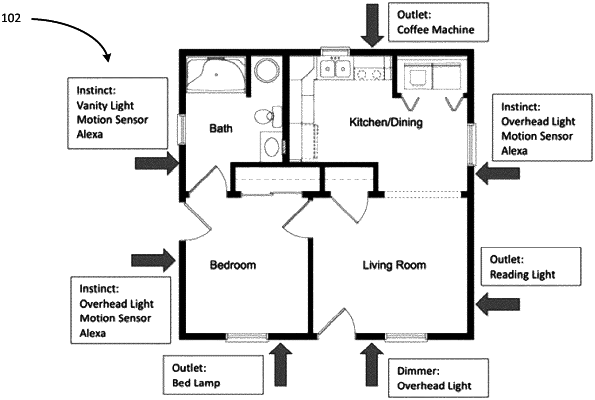| CPC G06N 3/04 (2013.01) [G16Y 20/20 (2020.01); G16Y 40/10 (2020.01); G16Y 40/20 (2020.01); G16Y 40/50 (2020.01)] | 20 Claims |

|
1. A method comprising:
transmitting, via one or more devices, one or more first signals indicative of one or more first statuses of the one or more devices;
receiving, via a controller, the one or more first signals;
determining, via the controller and based on the one or more first statuses, a base model;
transmitting, via one or more devices, one or more second signals indicative of one or more second statuses of the one or more devices;
receiving, via the controller, the one or more second signals;
comparing, via the controller, the one or more second statuses to the base model;
determining, via the controller and based on said comparing, an occurrence of an abnormal condition when the one or more second statuses are different than the base model;
receiving, via the controller and transmitted via the one or more devices, one or more third signals indicative of one or more third statuses of the one or more devices;
determining, via the controller, an occurrence of a recurring abnormal condition when the one or more third statuses are the same as the one or more second statuses;
updating, via the controller, the base model based on the recurring abnormal condition to modify the first status to include the recurring abnormal condition;
determining, based on the comparison, a safe score;
comparing the safe score to a threshold to determine the occurrence of the abnormal condition; and
comparing, via the controller, the safe score to the base model and updating the base model if the safe score is within a similarity range of the base model.
|